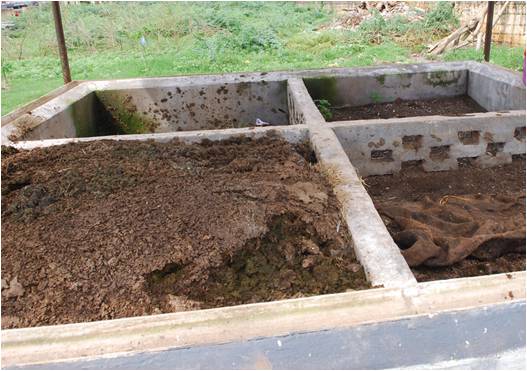Honey Bees: Honey bees are renowned for their complex and fascinating social organization. They live in well-organized colonies, with each member playing a specific role to ensure the survival and success of the entire group.
The degrees of sociality that have been seen in insects are characterized by three factors. These qualities are: Three divisions of labor exist in the colony:
1) Cooperative brood care, where individuals within the colony care for offspring who are not their own;
2) Reproductive division of labor, where the majority of individuals are non-reproductive and specialize in colony growth, maintenance, and defense while a small number reproduce
3) Overlapping generations, where offspring contribute to colony labor while their parents (at least their mothers) are still alive and within the colony. Species that express all three of the above characteristic are highly social or eusocial.
Honey bees (Hymeoptera: Apidae: Apis) meet all three of the criteria described above and are therefore eusocial:
- Reproductive division of labor—Each honey bee colony consists of a queen (reproductive female), workers (non-reproductive females), and drones (males). Each caste has a clearly defined role that is not performed by any other caste.
- Cooperative brood care—Workers care for the queen’s offspring. In most cases the queen’s offspring are sisters to the workers who are rearing them.
- Overlapping generations—Honey bee queens can live several years and coexist in the colony with their offspring (workers and drones).
Honey Bees Castes
Honey bees are social insects and live in colonies. A normal colony, during active season is composed of 3 kinds of individuals: one queen, thousands of workers (10000 to 30000 or even more) and few hundreds of drones, which vary in size. In addition, each colony has different developmental stages viz eggs, larvae and pupae which are collectively known as brood. There are threes castes of honey bees: drones, queens, and workers.
Drones—Drones are male honey bees. The drone’s head and thorax are larger than those of the females. Drones’ large eyes touch on the top center of their head, which makes them appear more “fly-like.” Their abdomens are thick and blunt at the end rather than pointy like the abdomens of the females. Drones are responsible for passing the colony’s genes on to the next generation by mating with queens from other colonies. Drones neither perform any duty inside the hive nor do they collect food from flowers. Each drone is fed by 3 to 4 worker bees. A colony rears and tolerates the drones only during breeding season when new queens are being produced and are later driven out of the colony to die of starvation. The sole function of a drone is to mate once which costs him his life. Maximum life of drone honey bee in summer is 59 days.
Queens—Honey bee queens are the reproductive females of the species. The queen’s head and thorax are similar in size to those of the worker. However, the queen has a longer and plumper abdomen than does the worker. Throughout most of the colony life cycle, the queen is the only reproductive female in the colony and is responsible for producing all of the offspring within the colony. A good queen can lay 1500-2000 eggs per day.A good mated queen may work satisfactorily for 2 or more years, although queens can live eight years or longer. However, in commercial beekeeping, queen is replaced every year to keep high brood rearing in a colony.

Queen releases queen substance (pheromone) which helps in the colony organization. It acts as worker attractant and inhibits ovary development in worker bees as well as raising new queen. Absence of queen pheromone is detected after about 30 minutes of queen loss and colony may start raising new queen. The pheromones in queen substance stimulate brood rearing, comb building, hoarding and foraging in a colony and thus play important role in normal working of a colony.
Workers—Worker honey bees usually are non-reproductive females. They are the smallest in physical size of the three castes, and their bodies are specialized for pollen and nectar collection. Workers perform all brood care, hive maintenance, and hive defense tasks in their colony. Rather than specializing in one job only, each worker progresses through colony tasks in predictable order based on age. This progression is called temporal (or age) polyethism.
Workers are imperfect females. They are unable to mate though they may start egg laying if a colony remains queen less for long period . The workers perform all the useful work in the colony.
Duties of workers include: Cleaning of the hive, feeding of larvae, raising queen cells when required, ventilate hive, guard the hive entrances, secrete bees wax, construct the combs, collect the nectar and convert it into honey, collection of pollen, water and propolis, produce a predigested food of royal jelly for feeding queens and young larvae and scouting for a new nest site during swarming. The workers also feed the drones but when not needed, they are thrown out of hive.
Communication and Social Order:
Honey bees rely on a complex system of communication to maintain social order and coordinate their activities. This communication system involves:
- Pheromones: These chemical signals are released by different castes and convey information about food sources, queen presence, danger, and other essential colony matters.
- Dances: Worker bees perform specific dances, such as the waggle dance, to communicate the location and direction of food sources to other bees.
The Importance of Social Organization:
The highly organized social structure of honey bees allows them to thrive in various environments. Their efficient division of labor ensures that essential tasks are carried out effectively, contributing to the colony’s overall success. This intricate social system makes honey bees essential pollinators, playing a crucial role in the health and productivity of our ecosystems.
Overall, the social organization of honey bees exemplifies a remarkable example of cooperation and specialization in the animal kingdom.





